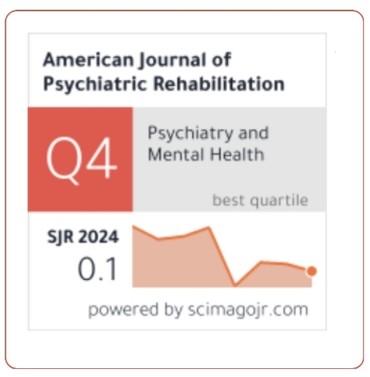Anomaly Detection Using Deep Learning for Fog-Assisted Iovs Network
DOI:
https://doi.org/10.69980/ajpr.v28i1.425Keywords:
Fog computing, secure communication, Internet of Vehicles, anomaly detection, fog-enabled IoVsAbstract
This project tackles critical security issues within Fog-Assisted Internet of Vehicles (IoVs) by utilizing Deep Learning-based anomaly detection strategies. We implemented and compared various machine learning algorithms such as Support Vector Machine (SVM), Random Forest, Decision Tree, Naive Bayes, Deep Neural Network (DNN), and DNN Autoencoder, achieving up to 97% accuracy in identifying malicious activities within IoV networks. To further improve performance, we integrated ensemble methods, particularly a Voting Classifier, which delivered an exceptional 100% accuracy. This advancement reinforces secure communication in IoVs against a range of cyber threats including authentication failures, data manipulation, Distributed Denial-of-Service (DDoS) attacks, and malware. Emphasizing the role of Fog-assisted architecture, our solution strengthens network security at the fog node level, contributing to the development of secure and dependable intelligent transportation systems. The outcomes of our work offer substantial societal value—ensuring safer roadways, protecting user data, and supporting reliable vehicle-to-infrastructure communication. By enhancing safety and network reliability, our approach highlights the transformative impact of cutting-edge technologies in fostering a smarter and more secure transportation ecosystem.
References
1. "Internet of Vehicles: Motivation, layered architecture, network model, challenges, and future aspects," by O. Kaiwartya, A. H. Abdullah, Y. Cao, A. Altameem, M. Prasad, C. T. Lin, and X. Liu, IEEE Access, vol. 4, pp. 5356–5373, 2016, doi: 10.1109/ACCESS.2016.2603219.
2. "Internet of Vehicles in the big data era," by W. Xu, H. Zhou, N. Cheng, F. Lyu, W. Shi, J. Chen, and X. Shen 10.1109/JAS.2017.7510736 IEEE/CAA J. Autom. Sinica, vol. 5, no. 1, pp. 19–35, January 2018.
3. J. A. Guerrero-Ibañez, S. Zeadally, and J. Contreras-Castillo, "Internet of Vehicles: Architecture, protocols, and security," October 2018, IEEE Internet Things Journal, vol. 5, no. 5, pp. 3701–3709, doi: 10.1109/JIOT.2017.2690902.
4. The study "Congestion avoidance through fog computing in Internet of Vehicles" by S. Yaqoob, A. Ullah, M. Akbar, M. Imran, and M. Shoaib was published in the journal Ambient Intell. Humanized Comput. in October 2019 (doi: 10.1007/s12652-019-01253-x).
5. IEEE Access, vol. 7, pp. 1570–1585, 2019, doi: 10.1109/ACCESS.2018.2887075; A. Ullah, S. Yaqoob, M. Imran, and H. Ning, "Emergency message dissemination schemes based on congestion avoidance in VANET and vehicular FoG computing."
6. "An effective and secure data transmission mechanism for Internet of Vehicles considering privacy protection in fog computing environment," by W. Zhang and G. Li IEEE Access, 10.1109/access.2020.2983994, 2020, pp. 64461–64474.
7. "On the impact of DDoS attacks on software-defined Internet-of-Vehicles control plane," by A. J. Siddiqui and A. Boukerche, in Proceedings of the 14th International Wireless Communication Mobile Compute. Conf. (IWCMC), June 2018, pp.1284–1289, doi: 10.1109/IWCMC.2018.8450433.
8. "Securing fog computing for Internet of Things applications: Challenges and solutions," by J. Ni, K. Zhang, X. Lin, and X. S. Shen 10.1109/COMST.2017.2762345 IEEE Commun. Surveys Tuts., vol. 20, no. 1, pp. 601–628, 1st Quart., 2018.
9. "Secure fog-assisted crowdsensing with collusion resistance: From data reporting to data requesting," by L. Zhu, M. Li, and Z. Zhang doi: 10.1109/JIOT.2019.2902459 IEEE Internet Things Journal, vol. 6, no. 3, pp. 5473–5484, June 2019.
10. A fog computing based approach to DDoS mitigation in IIoT systems," by L. Zhou, H. Guo, and G. Deng August 2019, pp. 51–62, Comput. Secur., vol. 85, doi: 10.1016/j.cose.2019.04.017."
11. "Fog computing: A taxonomy, survey, and future directions," by R. Mahmud, R. Kotagiri, and R. Buyya The Internet of Everything. 10.1007/978-981-10-5861-5_5; Cham, Switzerland: Springer, 2018, pp. 103–130.
12. "A survey of fog computing: Concepts, applications, and issues," by S. Yi, C. Li, and Q. Li, in 10.1145/2757384.2757397, Proc. Workshop Mobile Big Data,
13. "In their paper "Vehicular fog computing: A viewpoint of vehicles as the infrastructures," X. Hou, Y. Li, M. Chen, D. Wu, D. Jin, and S. Chen 10.1109/TVT.2016.2532863 IEEE Trans. Veh. Technol., vol. 65, no. 6, pp. 3860–3873, June 2016.
14. "Fog-assisted congestion avoidance scheme for Internet of Vehicles," by S. Yaqoob, A. Ullah, M. Akbar, M. Imran, and M. Guizani, in Proceedings of the 14th International Wireless Communication Mobile Comput. Conf. (IWCMC), June 2018, pp. 618–622, doi: 10.1109/IWCMC.2018.8450402.
15. A. Yousefpour, C. Fung, T. Nguyen, K. Kadiyala, F. Jalali, A. Niakanlahiji, J. Kong, and J. P. Jue, "A comprehensive overview of fog computing and associated edge computing paradigms," J.Syst. Archit., vol. 98, pp. 289–330, Sep. 2019, doi: 10.1016/j.sysarc.2019.02.009.
16. Security in fog computing: A novel technique to tackle an impersonation attack," by S. Tu, M. Waqas, S. U. Rehman, M. Aamir, O. U. Rehman, Z. Jianbiao, and C.-C. Chang, IEEE Access, vol. 6, pp. 74993–75001, 2018, doi: 10.1109/ACCESS.2018.2884672.
17. Deep learning: The horizon for distributed threat detection in fog-to-things computing, by A. Abeshu and N. Chilamkurti 10.1109/MCOM.2018.1700332. IEEE Commun. Mag., vol. 56, no. 2, pp. 169–175, February 2018.
18. "A survey of defense mechanisms against distributed denial of service (DDoS) flooding attacks," by S. T. Zargar, J. Joshi, and D. Tipper, IEEE Commun. Surveys Tuts., vol. 15, no. 4, pp. 2046–2069, March 2013, doi: 10.1109/SURV.2013.031413.00127.
19. "Recurrent and deep learning neural network models for DDoS attack detection," by S. Sumathi, R. Rajesh, and S. Lim In September 2022, J. Sensors, vol. 2022, pp. 1–21, doi: 10.1155/2022/8530312.
20. "Comparative study on TCP SYN flood DDoS attack detection: A machine learning algorithm based approach," by S. Sumathi and R. Rajesh pp. 584–591, Nov. 2021, Wseas Trans. Syst. Control, doi: 10.37394/23203.2021.16.54.
21. "Realtime monitoring system of automobile driver status and intelligent fatigue warning based on triboelectric nanogenerator," by Y. Xu, W. Yang, X. Yu, H. Li, T. Cheng, X. Lu, and Z. L. Wang doi: 10.1021/acsnano.1c00536; ACS Nano, vol. 15, no. 4, pp. 7271–7278, April 2021.
22. "A review of intelligent driving style analysis systems and related artificial intelligence algorithms," by G. Albertus, M. Meiring, and H. C. Myburgh, Sensors, vol. 15, no. 12, pp. 30653–30682, 2015, doi: 10.3390/s151229822.
23. "Privacy-preserved pseudonym scheme for fog computing supported Internet of Vehicles," by J. Kang, R. Yu, X. Huang, and Y. Zhang 10.109/TITS.2017.2764095 IEEE Trans. Intell. Transp. Syst., vol. 19, no. 8, pp. 2627–2637, Aug. 2018.
24. "Offloading in Internet of Vehicles: A fog-enabled real-time traffic management system," by X. Wang, Z. Ning, and L. Wang 10.1109/TII.2018.2816590 IEEE Trans. Ind. Inormat., vol. 14, no. 10, pp. 4568–4578, Oct. 2018.
25. "A framework of abnormal behavior detection and classification based on big trajectory data for mobile networks," by H. Zhang, Y. Luo, Q. Yu, L. Sun, X. Li, and Z. Sun, Vol. 2020, pp. 1–15, Dec. 2020, doi: 10.1155/2020/8858444.
26. IoT time-series data anomaly detection: A survey by A. A. Cook, G. Misirli, and Z. Fan 10.1109/JIOT.2019.2958185, IEEE Internet Things Journal, vol. 7, no. 7, pp. 6481–6494, July 2020.
27. "An anomaly mitigation framework for IoT using fog computing," by M. A. Lawal, R. A. Shaikh, and S. R. Hassan, Electronics, vol. 9, no. 10 pp. 1–24, 2020, doi: 10.3390/electronics9101565.
28. "Exact greedy algorithm based split" by D. K. K. Reddy, H. S. Behera, J. Nayak, B. Naik, U. Ghosh, and P. K. Sharma vol. 60, Aug. 2021, Art. no. 102866, doi: 10.1016/j.jisa.2021.102866.
29. J. Yakubu, S. M. Abdulhamid, H. A. Christopher, H. Chiroma, and M. Abdullahi, ‘‘Security challenges in fog-computing environment: A systematic appraisal of current developments,’’ J. Reliable Intell. Environ., vol. 5, no. 4, pp. 209–233, Dec. 2019, doi:10.1007/s40860-019- 00081-2.
30. "Using LSTM networks for attack detection in fog-to-things communications," by A. Diro and N. Chilamkurti 10.1109/MCOM.2018.1701270 IEEE Commun. Mag., vol. 56, no. 9, pp. 124–130, September 2018.
31. "Anomaly detection based on convolutional recurrent autoencoder for IoT time series," by C. Yin, S. Zhang, J. Wang, and N. N. Xiong 10.1109/tsmc.2020.2968516 IEEE Trans. Syst. Man, Cybern. Syst., vol. 52, no. 1, pp. 112–122, Jan. 2022.
32. Dataset Link:
KDD-CUP:
Downloads
Published
Issue
Section
License
Copyright (c) 2025 American Journal of Psychiatric Rehabilitation

This work is licensed under a Creative Commons Attribution 4.0 International License.
This is an Open Access article distributed under the terms of the Creative Commons Attribution 4.0 International License permitting all use, distribution, and reproduction in any medium, provided the work is properly cited.









